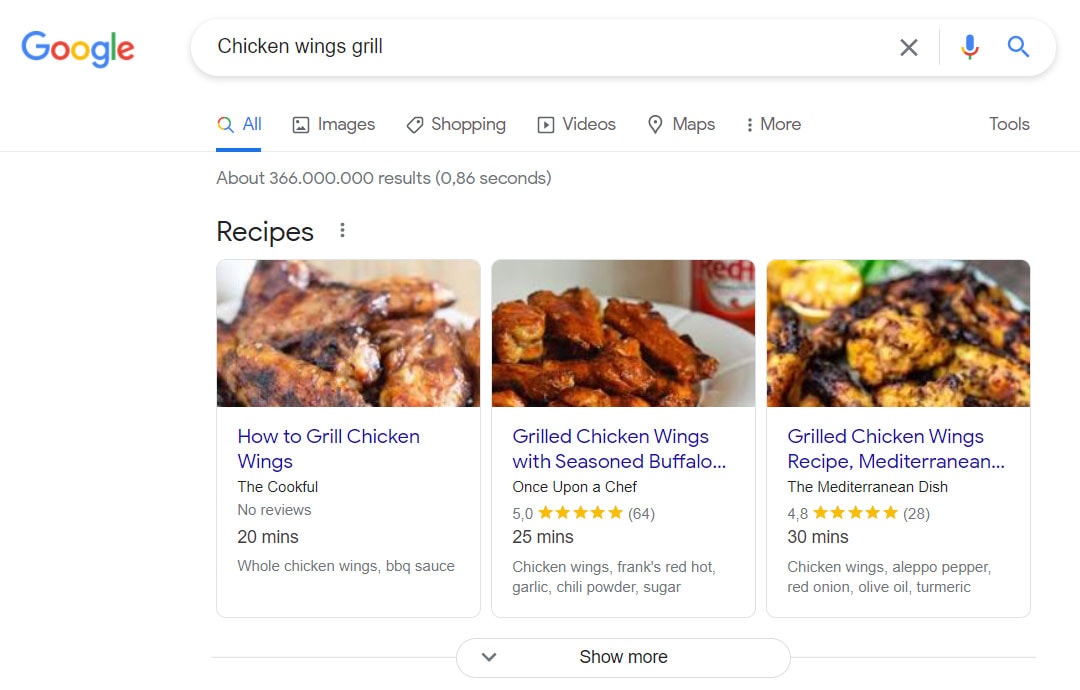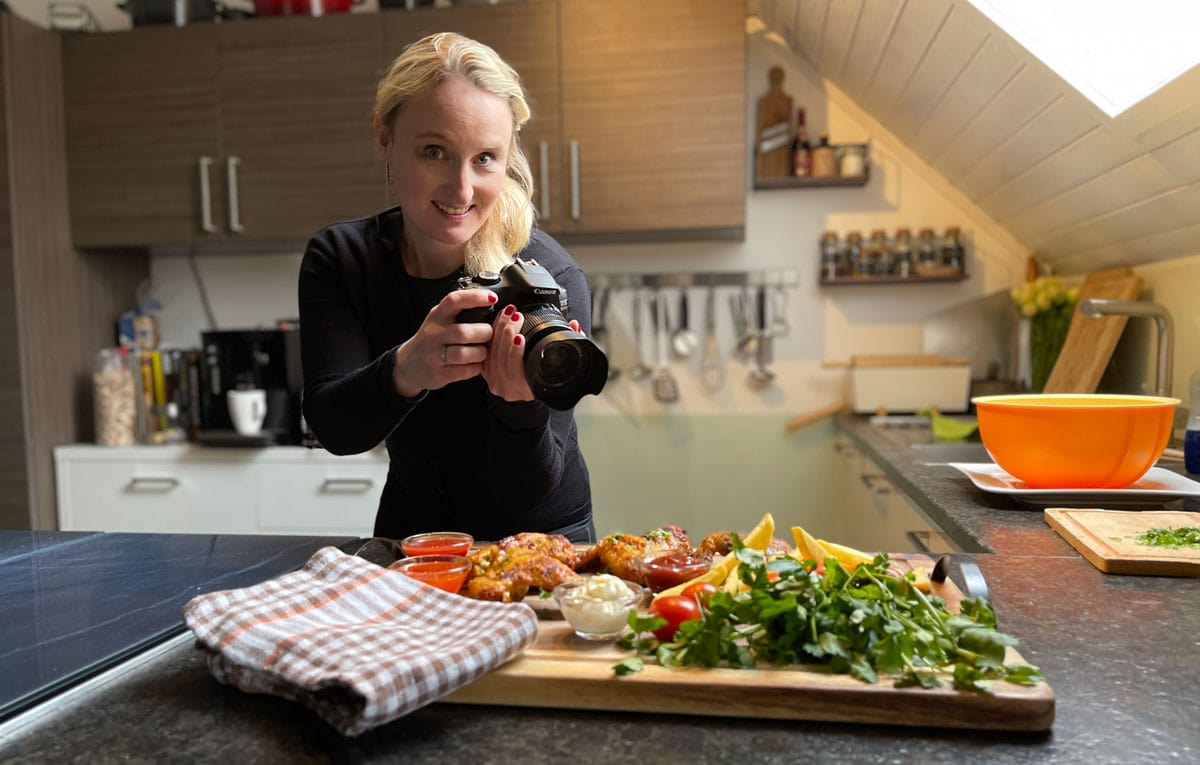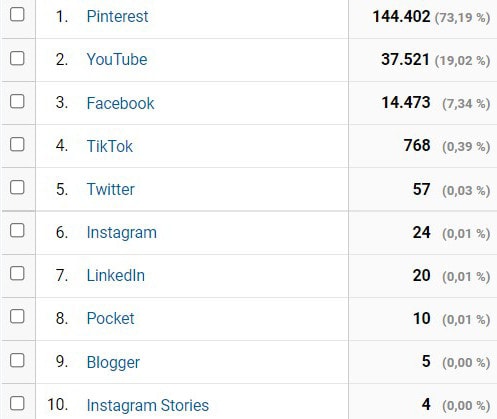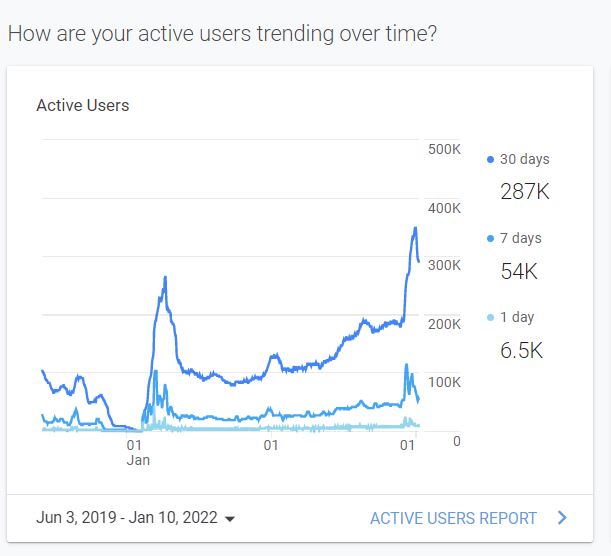Our customers Anja & Matthias Würfl write an extremely successful food blog. How do they manage? What can you learn from this for your blog project? And what should you keep in mind when it comes to SEO? Find out more in their guest article for wp unboxed.
Cooking a dish, taking photos with your mobile phone and writing a few lines about it. Then place the text and pictures on a website and your first food blog post is ready. Repeat two or three times a week after work and in a few months the food blog will really take off. Well, we didn't think it would be quite that crass when we launched "Die Frau am Grill" in autumn 2018. But we tended to imagine the venture of setting up and running a food blog to be a little easier...
How wrong have been our thoughts. And partly also our efforts. But no reproaches! We were new to the blogging world at the time, and terms like keywords, SEO and ranking were not just foreign words to us. We simply didn't know them. The fact that our website had almost half a million page views last December (2021) is due to a number of circumstances - perseverance, time, struggle and money.
In order for you not to invest the same amount of time, nerves and money, we have summarized a few points for you. This way you can concentrate on the essentials like great photos, awesome texts and then, with enough continuity, success will come all by itself. If we had already known in 2017, the number of visitors last December would have been at least twice as high.
Your own food blog - just for fun or is there more?
You should ask yourself this question right at the beginning. Is your food blog just for fun? Or are you doing it for fun, coupled with the intention of earning money? Many people have absolutely no monetary intentions with their food blog, speaking from personal experience.
If you only publish your pictures and recipes (with or without additional text) on your food blog, you don't have to worry about too many things. We'll take a look at what exactly in the following. But that doesn't mean that the fun-from-the-joy bloggers should stop reading now. Because even they will want to know how to avoid a hacker attack. But more on this below with a precise description of the catastrophic event!
The universe of Google, explained for beginners
For rookies, as we once were. Not that we are now certified Google professionals. But I can certainly tell all newcomers here one or two things that literally bring a blog "forward".
So let's start with an example: Mr. Müller searches Google for tips on "grilling chicken wings". On the first site of the search results (in technical jargon "SERPs" for "Search Engine Result Pages"), he is naturally shown results that are relevant to the topic. And Mr. Müller will certainly click on one of the results on the first site.
You can state right away - if your website only ranks on the second page of the search results or even further down, it almost doesn't exist at all for Google. That is a fact. The vast majority of internet searches even end with a click on one of the first three results!

The mother of all questions is of course, how do you get there, to places one to three? Let me tell you in advance, Google does not display the results arbitrarily. An algorithm uses various factors to calculate which website is at the top. I have not yet read an article by anyone in which all these factors are listed, but there is agreement on some essential ones. And these are also communicated by Google itself. Three very important ranking factors are:
Backlinks
Do many other websites provide links to my food blog? If so, that's a good sign for Google. At least if the links come from authoritative or prominent sites, for example from other long-established food blogs or news sites. Websites with particularly high authority are, to name a few industry leaders, huffpost.com, nytimes.com, or buzzfeed.com.
Of course, you can also buy backlinks nowadays. There are, for example, backlinks from Russia, which are very cheap. But Google, on the other hand, is not stupid. Purchased backlinks can lead to a penalty in the ranking. There are countless articles on the subject of backlinks on the web, including here at wp unboxed. It's worth putting on a pot of tea and spending an afternoon at the weekend reading up on the subject. It's best to do this right after you've published your first articles on your food blog, not over a year after we started- over a year after the start.
Age of the website
Well, the longer something is on the market, the better it must be, right? That's true in most cases. And this is also true for Google. Because Google first has to build up trust in a website. And if good content is published regularly over months and years, then the search engine knows it can show this URL of said website a little bit higher in the search results, because people can be trusted. Google measures the quality of your content, among other things, by how many visitors stay on a website and for how long.
Core Web Vitals
This ranking factor was introduced only recently. There are also interesting articles on this on the internet. Nevertheless, I would like to go into it briefly for newcomers. One of these web vitals is, for example, loading speed. Do visitors have to wait endlessly for the site to build up? Or is it completely loaded in a fraction of a second? Furthermore, are there many pop-ups that negatively affect the user experience? For example, newsletter pop-ups or advertisements that disrupt the reading flow?
In addition, does the site "float" or can it be scrolled up and down without any problems, especially concerning smartphone usage? The free Google search console, which I highly recommend, will tell you which improvements should be made to your site. And finally, a tip if you work with a lot of images, such as in a food blog - get a Plugin right at the beginning that compresses the images. This saves a lot of data and thus shortens the loading time.

Keywords and text length
You can create the best and most delicious potato soup, and shoot the most beautiful photos, but your post does not appear in the search results? Well, this may be due to the fact that you haven't written a detailed text about it, but have only published the picture, ingredients and preparation in text form. Google scans all websites in a fraction of a second when you search for "potato soup" - unbelievable, but true.
The search engine not only checks the ranking factors listed above, but also whether you used the keyword "potato soup" in your post. How often? And in which places? In addition, how long is your text compared to the competing websites? If you now think "I'll just write some long text and use the word 'potato soup' repeatedly", you're barking up the wrong tree. It is true that Google has not yet reached the point where it can automatically recognise the quality of a text to 100 percent. But someone else tells Google about it - the visitors to your website.
Because they leave after reading a few sentences if the content is not first class. And Google notices that very well. So, if you have dealt sufficiently with the topic of backlinks over the aforementioned pot of tea on a Saturday afternoon, then you know what's coming up on Sunday. Intensive discussion of the topic of "keywords" and WordPress SEO. An SEO Plugin for your website is very helpful. For example, the free version of Yoast offers a lot of support.
Video integration
Video is king. This can be seen, for example, in the fact that more image content was uploaded to Instagram in the past than video content, but now video content is on the rise. Likewise, social platforms like TikTok are very successful with their video model, not to mention YouTube. Many demand more than pictures and texts, and Google is increasingly taking this into account in its search results. Those who can now enrich their food blog articles with video material, such as videos of the dishes, are in the clear.
If that's too much effort for you, there are already videos for many recipes - for example on YouTube - which you can easily integrate into your blog post. Let's say, you have produced a delicious potato soup. Then take a look at YouTube to see if there is a similar recipe there. Copy the video URL and include it in your blog post under the heading "Here is another delicious potato soup recipe in the video". The great thing about this is that when people watch the video on your blog, Google counts this time as part of the dwell time. And the longer people stay, the cooler Google thinks it is...
The right WordPress Theme
A never-ending theme that starts with the Themes. A WordPress Theme is practically a prefabricated framework for your website, without content, of course. Alternatively, you would have to have a website programmed. Themes are already available for free or at a reasonable cost, but custom programming usually costs a lot of money. We have also opted for Theme.
Unfortunately, I can't give you any advice on which one to choose. It is really a subjective decision how you want to present yourself to the outside world. So the heading above this paragraph is actually not quite correct, as there is no one right WordPress Theme. Again, look around a bit on the internet. I advise you to look at a lot of Themes and look into the topic. Changing the Theme in WordPress afterwards costs time and money. At least if you are not familiar with the IT behind your website and have to hire someone.
Monetization
Earning money with your food blog, in short. I wouldn't think too much about that, at least not at the beginning. The reason - first of all, visitors to the website site have to come here. And for that, you need good content that is published regularly. Do you want to put in the big display ads right at the beginning, set lots of affiliate links and maybe even look for possible sponsors? All of this distracts you far too much from the important tasks - namely producing good content.
The issue of monetisation usually takes care of itself for good food blogs. At least when it comes to sponsors. If the food blog is of high quality and also has a wide reach, they stumble in all by themselves.
Promotion - Social Media and Newsletter
These days, nothing works without advertising your own business. And it should also be as cheap as possible, right? Then I recommend collecting email addresses right from the start so that you can send the latest recipes to your newsletter subscribers once or twice a month.
There are manynewsletter tools for WordPress. We use Mailchimp, which is also free up to a certain volume. I can't tell you whether it's the best tool, because I don't know the others. In any case, we are very satisfied with it so far. With a newsletter, you bring your own blog to the attention of your readers at regular intervals. And that also ensures more website visits.
Social media is not that simple. Since there are different platforms, you have to find out for yourself what works best for your content. For example, we have about 20,000 Facebook subscribers, plus about 10,000 followers on Instagram. But we get very little traffic from these platforms. The situation is different on Pinterest. We entered Pinterest much later than Facebook and Instagram. Here from Google Analytics are the website visits that came to our website via social media platforms in 2021:

Security
Now, we don't mean workplace safety in the kitchen, as in not cutting your finger😊. Or forgetting, in the case of a BBQ blogger, to turn off the gas tap after your BBQ. The security of your website is of elementary importance. And I'm speaking from personal and very painful experience here, as a glance at the following screenshot will make clear:

In the middle of the graph, you see a rapid increase in the number of visitors. Google had started pushing our posts via Google Discover at the beginning of 2020. The keyword rankings also developed extremely positively. Just during this period, our website was crippled by a so-called Japan hack. For a whole weekend, we were no longer able to access the backend - i.e. our system. But the hackers could. And they created thousands (!) of additional spam URLs under our root domain. What a mess!
Our IT specialist was able to restore the original version of our website from the previous week. But Google was not so quick and punished us massively. The curve crashed, as can be seen clearly, almost into a bottomless pit. And you can't rebuild Google's trust as quickly as you lose it.
That's why you need security right from the start. And this has to happen on two levels sites. First on the website, get the right Plugins for this. It is definitely worth googling "security Plugins for websites", or simply reading this article. Furthermore, you should make sure that everything possible is done to ensure security on sites the website hoster.
Shortly after the hacker attack, we switched to Raidboxes, installed two more plug-ins and have been surfing the internet with our food blog ever since...
